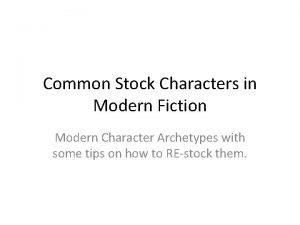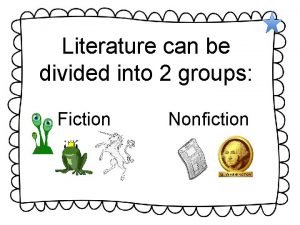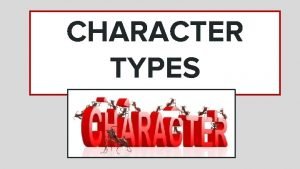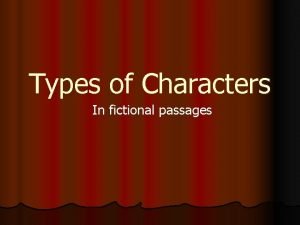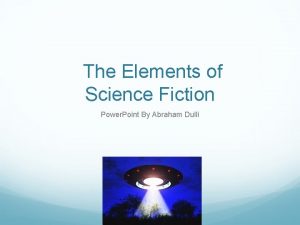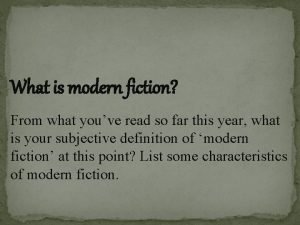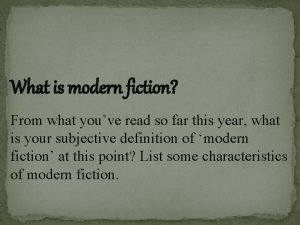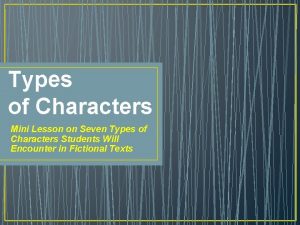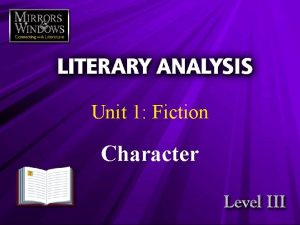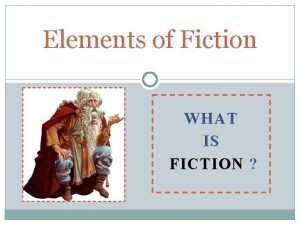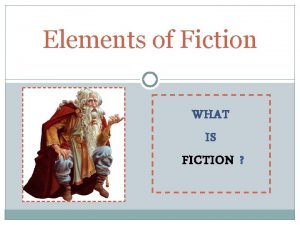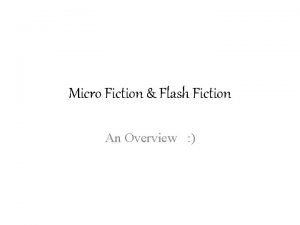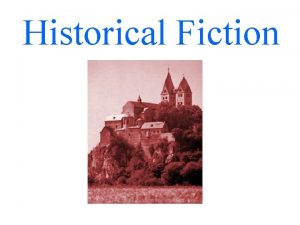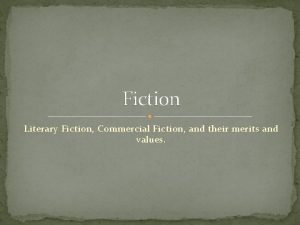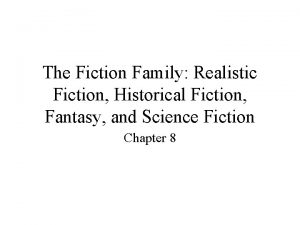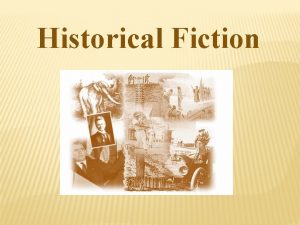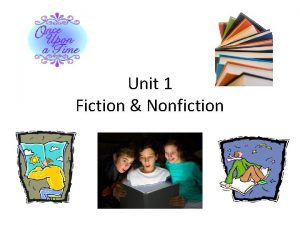Common Stock Characters in Modern Fiction Modern Character

















- Slides: 17

Common Stock Characters in Modern Fiction Modern Character Archetypes with some tips on how to RE-stock them.

Antihero • This character, a protagonist (typically seen in detective and adventure genres) whose personality flaws distinguish him or her from a standard hero, is inherently much more interesting than the upstanding counterpart. The key characteristic is usually misanthropy, but that’s not enough to round a character out. An antihero must have a solid foundation on which to stand.

The Bully • A bully oppressing meeker residents of a school, town, or one particular person.

School Diva • A well-liked or worshipped female student, who sees herself as an alpha female. Her male analogue is the Big Man on Campus (BMOC)

The Absent Minded Professor • Perhaps Professor Fumblebuttons is just pretending to be a shock-haired scientist who can’t remember where he put his glasses (“Um, the glasses you’re wearing? ”). What’s his motive for his deception?

The Boy/Girl Next Door • Is John or Mary really what he or she seems? What dark secret does that wholesome countenance conceal? This character easily pales in comparison with a complicated villain or sidekick, so make an extra effort to invest your protagonist with personality — or relegate the squeaky-clean persona to a secondary role.

Clown/Fool • Traditionally, the court jester — often someone of fragile mental stability or feigning the same — was the only person allowed to mock or question his powerful patron, and his antics involved not only lighthearted entertainment but also sometimes barbed satire or veiled criticism. A comic-relief character needs to be more than just a wisecracking or mischievous type. Perhaps he’s the omniscient narrator, or he’s pretending to be a smart-aleck to divert attention from his true purpose.

The Damsel in Distress • The helpless young maiden is one of the most tired tropes in storytelling — and so is the helpless young maiden turned butt-kicking babe. Better yet, imbue your ingenue with the characteristics of another character type, either one on this list or another stock persona.

Everyman • The peril of presenting a character designed to represent everyone is that he will appeal to no one. Make sure your everyman (or everywoman, or boy or girl edition) possesses enough distinguishing characteristics to be interesting, even intriguing. Remember: Relentlessly virtuous characters are boring, and stories in which they have no real challenges fail to engage readers.

Femme Fatale • The enduring appeal of the deceptive villainess is whether she is in fact aiding or thwarting the protagonist. It’s a balancing act to keep readers guessing to the very end of the story—and that may not be enough. What if your femme fatale is herself deceived, either by the protagonist or by a third character? Twists within twists keep this trope fresh.

Prostitute with a Heart of Gold • The bad girl turned good girl is a nice repudiation of moral intolerance, but it’s a stale stereotype. As in the case of her sister the femme fatale, readers shouldn’t be able to predict how she will behave. Is a second-act of kindness part of a climactic ruse? Is she pressured to betray the protagonist, or is it part of her own plot?

Knight-errant • This bright-eyed variant of the hero can drag down a story with him (or her) — take care that the conscientious crusader is not too glistening of tooth and sparkling of eye. The most interesting knight-errant in literature is Don Quixote, who was an abject failure (and was all the more appealing for his indefatigable idealism).

Nerd • Geek, dork, nimrod — been there, done that. But, for example, in the brilliant film Brick (film noir meets adolescent angst), the school brain is not an object of scorn but an awkward, laconic human database for the teenage gumshoe — and there’s a touch of empathy for him in the way the lead character keeps him at arm’s length. What makes a nerd? And what makes him (or her) interesting? Hints of depth, or of deviousness, or both.

Sidekick • The protagonist’s right-hand man or woman serves as a counterpoint: intrepid vs. timid, serious vs. silly, and so on, one way or the other. Make sure your lead character’s attendant complements him or her, but also keep their relationship fresh by introducing some vulnerability in the main character the subordinate can exploit.

Tomboy • The tomboy transformed is a tired trope, not much better than the mousy maiden who becomes a blithe beauty just by taking off her eyeglasses. Resist the urge to go the Cinderella route: If an androgynous or athletic woman or girl refuses to conform to societal standards for feminine appearance, go with it. But why does she rebel against such norms? That’s the key to her character.

Tortured Artist • In literature as in real life, complicated creative types are tiresome. A broadly comic tortured artist may be an effective device, but the writer must handle this type with care.

Wise man • The scholarly mentor is a time-tested element of many classic stories (think Merlin, or Yoda), so any such character must possess distinct traits. Perhaps your story’s wise man is brilliant about some things but inept concerning others — he needs his protégé’s help in affairs of the heart, or, like the absent-minded professor, with whom he shares some characteristics, is a sage when it comes to intellectual areas but is at a loss when it comes to practical matters.
 Features of preferred stock
Features of preferred stock Characteristics of common shares
Characteristics of common shares Modern stock characters
Modern stock characters It is genre of speculative fiction dealing with imaginative
It is genre of speculative fiction dealing with imaginative Elements of non fiction
Elements of non fiction Contemporary realistic fiction vs historical fiction
Contemporary realistic fiction vs historical fiction Realistic fiction
Realistic fiction Flat and round characters
Flat and round characters Types of characters
Types of characters Types of characters in fiction
Types of characters in fiction The elements of science fiction
The elements of science fiction Elements of science fiction
Elements of science fiction Cairan dari hasil rebusan daging disebut
Cairan dari hasil rebusan daging disebut Stock initial
Stock initial Elements of fiction: character
Elements of fiction: character Modern fiction definition
Modern fiction definition What is modern fiction
What is modern fiction Dynamic character
Dynamic character


